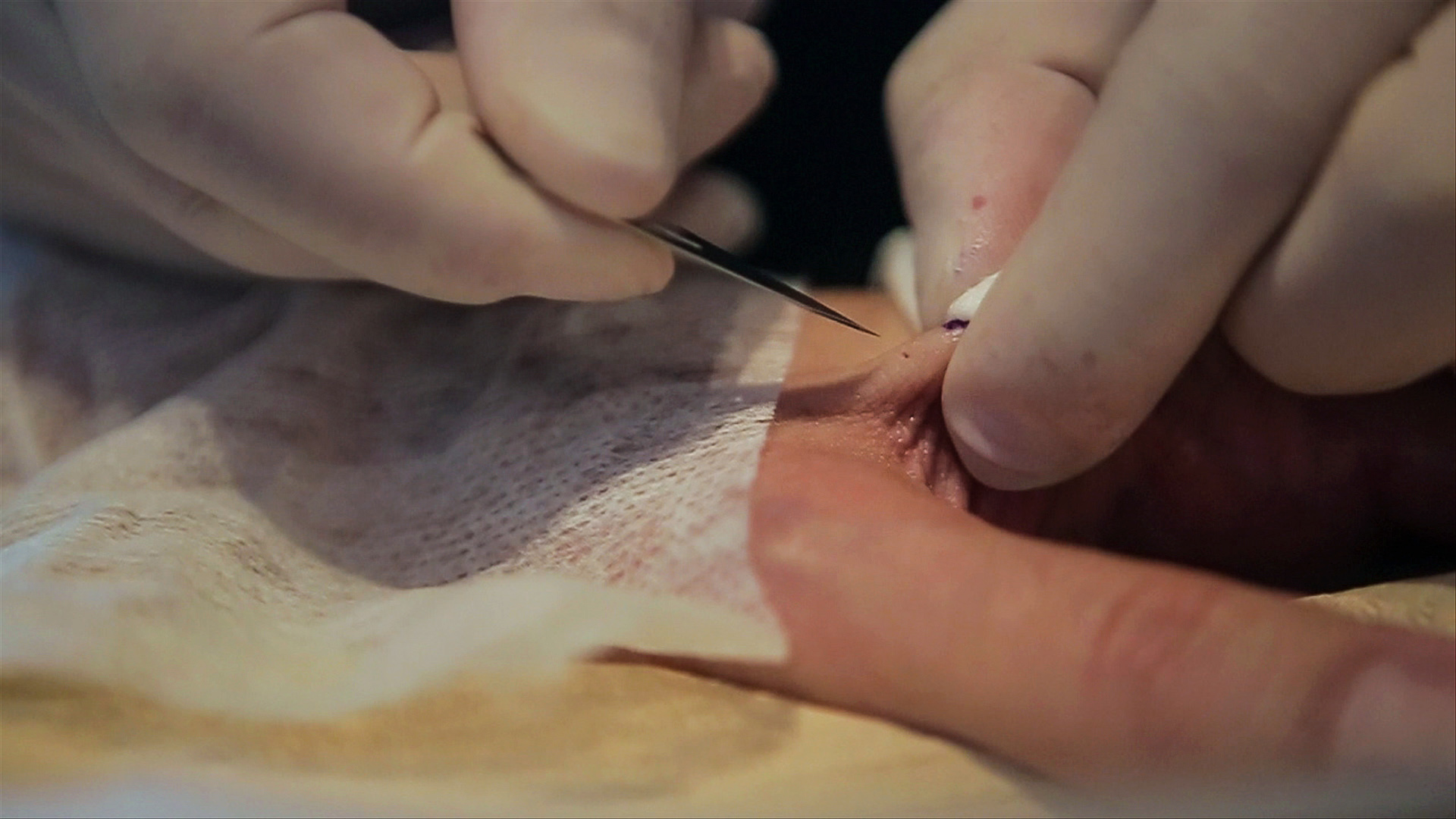 “Only the stitches hurt, because I looked at them,” artist Anthony Antonellis says, trying not to itch the incision site between the thumb and index finger.
“Only the stitches hurt, because I looked at them,” artist Anthony Antonellis says, trying not to itch the incision site between the thumb and index finger.
He says it didn’t hurt when the Brooklyn body modification specialist cut open the skin with a 0.75 inch blade or when he stuck the long, blade-less installer inside, pushing and pulling the skin apart to make way for the RFID chip. “I Eternal Sunshine‘d that entire hour of my life.”
When I arrived with our video editor, the RFID chip was sterilizing in a medical dish at the studio. The specialist was tired of people documenting his tongue-splitting and ear-elfing, so we kept it anonymous for the shoot. We did get close-ups of the implantation, which you can see in the graphic video above.
The NFC / RFID chip is the size of a grand of sand. It’s equipped with a tiny antenna and encased inside a glass capsule to keep it from being disrupted by its fleshy environment. This chip stores 1KB of data and is readable like a key fob by compatible phones, tablets, card readers and the Arduino microcontroller.
“It’s usually used for privacy, but I use it for a public purpose, which is to distribute artwork,” the artist explains. He hovers his Android 1-2cm above the clotted cut, and up pops his favicon, a signature Antonellis gradient gif.

The NFC / RFID signal is usually encrypted, but the artist’s implant stores publicly accessible data. It’s read-only, but changeable when Antonellis decides to upload new works. These could be GIFs, JPGs, Midi files, favicons, ASCII art…
Right now it’s this — 10 frames, 6 colors, 1 kilobyte.
![]()
You’re looking at the contents of the world’s first net art implant.
Antonellis is going bigger: “Think of it as a changeable, digital net art tattoo vs. fixed information.” He’s developing it to pair with an app for Android (maybe iPhone, eventually). You’ll be able to swipe and download the data into your own phone and view previous artworks from a roster of exhibiting artists.

“I like the idea of micro-curation,” Antonellis explains.
Every 30 days for the last few months, Antonellis has been ordering two credit cards with custom images, each card featuring the work of an artists, many of whom have been featured on his online-gallery/exhibit listing site NetArtNet.net. Project Credit Card Curation wraps up in October. Like the NFC net art implant, it pushes the definitions of exhibition space. Clearly.



But Antonellis insists that there is no art gallery inside his hand, otherwise I would be comparing it to Aram Bartholl’s Deadrops — the memory card-reading and CD-burning slots recently installed on the sides of various buildings in New York, dispersing digital art to whoever wants it.
“I don’t think you could say it’s a gallery. It’s more of a floppy disk!”
When he refers to it as “a digital tattoo,” he makes me cringe. Isn’t he underscoring the physical incision and microchip insertion a bit? But he’s the android now, so he can call it what he likes and do what he wants: “I’ll be curating favicons on my hand instead of the website.”
We stopped by our video editor’s living room for a quick interview. We need another money shot of the chip working that’s not inside the tattoo studio. “Ok, let’s do another take where I’m not shaking and sweating and the Facebook messages aren’t popping up.”
I ask Anthony again if he’s ok, if it hurts, he’s ok, right, right?
“I don’t feel anything. I feel like someone is holding a paperclip to my hand. It’s just a little cut…”
UPDATE: Anthony “666” Antonellis feels great. Thanks, haters!
(Video: Aymann Ismail/ANIMALNewYork)


